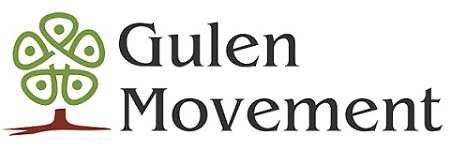
Loye Ashton and Tamer Balci
The Gülen movement has been given a positive coverage by the media like The Economist, The New York Times, The International Herald Tribune, Le Monde and Forbes and by University presses such as Syracuse University Press, SUNY Press, Leeds Metropolitan University Press, and Stanford University Press.
Within Turkey, many journalists, academics, actors, actresses, singers, directors, scriptwriters and art critics, all from diverse political backgrounds, have expressed support for the movement, in various ways. The supporters of the movement also include civic leaders and politicians, as well as the majority of current and past Ministers, Prime Ministers of the country like President Turgut Ozal (right wing), Prime Minister Bulent Ecevit (left wing), Nationalist leader Alpaslan Turkes (right wing), President Suleyman Demirel (right wing), Prime Minister Hikmet Çetin (left wing) and President Abdullah Gul.
Outside Turkey the leaders of Central Asian countries such as Saparmurat Turkmenbaşı, the former president of Turkmenistan; and Haydar Aliyev, the former president of Azerbaijan, as well as presidents of Kazakhistan, Kirgizistan, and Tajikistan are among the political leaders who have expressed support for the movement.
Renown figures like Pope John Paul II, who gave a personal audience to Gülen and exchanged ideas on interfaith dialog, former U.S. president Bill Clinton, and senator Hillary Clinton, who verbally acknowledged the contribution of the movement to world peace and true understanding of Islam are only few of the renown figures mentioned here that acknowledged the Gülen/Hizmet Movement abroad.
How ironic it is that Gülen, who had been and still is accused by radical secularists of clandestinely working to build an Islamic state, was at the time also accused of being one of the Pope’s “secret cardinals.” Nevertheless, since 1998, many theologians, priests, rabbis and Muslim leaders in various countries, including United States, have ignored such unsubstantiated claims and stepped up to express their support for the peaceful contributions of the movement to interfaith dialog worldwide.
The late Uzeyir Garih, a prominent Turkish-Jewish businessman called Gülen someone “who tries to balance the aggression, greed and egoism inherent in human beings with their intense natural inclination for education, and to teach fellow beings to love humans and God.” Another prominent Turkish-Jewish businessman, Jak Kamhi, has recognized and applauded Gülen’s contributions to the revival of the culture of peaceful coexistence, and adds “without this culture of peaceful coexistence that the Ottomans and modern Turkey have, I would not be here.”
Critiques of the movement range from academic criticism based on field studies or literature surveys to politically driven “virulent attacks” in the media, attempts at economic marginalization, and continuing “legal harassment” by “radical prosecutors”. While often marginal within the overall context of Turkish society, some opponents accuse the movement of concealing a political agenda to change the secular nature of Turkish Republic, which is, according to Graham Fuller (1), a “sweeping and unanswerable charge.” When examining such charges, certain patterns emerge allowing these critics to be identified as three main types:
1- political/pragmatic opponents who see the Gülen-Hizmet Movement as a threat to the establishment power/ status structure,
2- ideological opponents such as former or current advocates of Marxism-Leninism-Maoism, neo-nationalist (ulusalcilar), radical political Islamist groups, and finally
3- those who are misled by some elements of the media about the nature of the movement.
POLITICAL / PRAGMATIC OPPOSITION TO THE MOVEMENT
The most frequently raised critique against the movement is a legal case against Gülen that accused him of founding a clandestine organization with the intention of overthrowing the secular regime of Turkey. That case has now been dismissed. While this case was, in fact, brought to the court by a state prosecutor, Gülen’s critics fail to contextualize the case within the socio-political environment of Turkey in the late 1990s, particularly with respect to three key details.
First, it is often not mentioned the charged atmosphere of 1997, a post-modern military intervention.
Second, the architect of the case was a state prosecutor known for his ultranationalist stance and made famous by his imprisonment of the current prime minister of Turkey, Tayyip Erdoğan, on the basis of a poem the latter read at a gathering. This prosecutor was later dismissed from his office due to an illegitimate affair with a subordinate; furthermore, evidence has surfaced indicating that he was being blackmailed to prosecute Gülen in order to keep this affair from getting publicized.
Third, is the connection of those business owners whose media outlets were instrumental in generating the publicity hype over the legal case against Gülen. These same media moguls also owned financial institutions that declared bankruptcy shortly thereafter and were confiscated by the state authorities, costing the Turkish treasury the equivalent of over 100 billion dollars. In the Turkish media, the trial of Gülen conveniently overshadowed the coverage of this major banking scandal.
A second charge that has been leveled against the movement concerns the financing of the constantly increasing number of schools in and outside of Turkey. While the transparency of funding is not an issue for the hundreds of thousands of donors in Turkey, to outsiders the charges may appear noteworthy. In responding to allegations of the movement’s receiving aid from such contradictory foreign sources as the CIA, Mossad, the Vatican, Saudi Arabia, Iran, and the Russian Federation, Graham Fuller explains that these schools are funded from the generosity of wealthy businessmen who see such work not only as a form of zakat (alms-giving as a means of assisting the less fortunate and reducing economic inequality), but also as the realization of ihsan, the deeper spiritual motivation to put one’s faith in action for the purpose of perfecting spiritual excellence by ‘doing beautiful things.’
IDEOLOGICAL OPPOSITION
The Gülen Movement’s main ideological opponents, namely anti-religious Marxists/Maoists/Atheists (ie. the far left); neo- nationalists (ie. the far right), radical political Islamists, and Kurdish separatist-terrorists (PKK) may seem too dissimilar to have anything in common; but, in fact, they are bound together by the rigidity of their political agendas, their willingness to use unethical, illegal and/or violent means to reach their ideological ends, and their hostility toward any efforts by Turkey to join the European Union. These extremist circles, who seek to garner the social, economic and political support of malleable Turkish citizens – in particular, that of the young and the wealthy – perceive the recent success of more moderate politicians and middle-of-the-road, faith- based civic movements like the Gülen Movement as more than a mere hindrance to their plans; they define it as a threat to “their nation’s existence.”
Perhaps the staunchest opposition to the Gülen Movement comes from one radical end of the Turkish political spectrum: the far left. These militant laicist (ie. anti-religious) Marxists/Maoists/Atheists have been especially active and disproportionately powerful in the fields of print media and advertising since 1968. Radical leftist writers who have persistently pursued Fethullah Gülen first insisted that he and his followers were after the establishment of a long-range Islamic state. When a series of claims to defame Gülen were rejected by the courts and scoffed at by the public, and no evidence could be presented to prove them, radical leftist opponents of the Gulen movement began to publish other forms of print media, such as distorted, derogatory books about Gülen and his community.
Gülen’s opponents on the right side of the Turkish political spectrum are less visible, as they tend to express their views and mobilize their resources behind closed doors or via anonymous websites; even so, they may be no less active in carrying out certain forms of counter-mobilization. Generally speaking, it is not practicing faithful Turks who have a negative view of the GHM, but rather, politically ambitious individuals who use Islamic conservatism as a front for their own parties’ ultra-nationalistic agendas.
In fact, the only religious opponents of the Gülen Movement are hard-line “fundamentalists” who promote a distinctly separatist version of Islam, such as young Turkish “radicals” (radikaller). Many members of these groups view interfaith dialog as heretical and the Gülen Movement’s efforts to improve the cultural, educational and interfaith sectors in various countries as incompatible with their own interpretations and practice of Islam. Hence, the Gulen movement schools in Afghanistan were temporarily closed by a subgroup of the Taliban in 2001, even though permission to open the schools had been granted by the state and its military in 1995; and there are currently no schools in Saudi Arabia, Syria or Iran.
A final, more recent opponent group to the Gülen Movement is the separatist-terrorist organization Kurdish Worker’s Party (PKK). These Kurdish separatists in Eastern Turkey view the recent warming of many Kurdish citizens of Turkey, most of whom live in poverty-stricken Southeast Turkey to the Gülen Movement negatively.
In summary, the Gülen Movement’s major ideological opponents are keenly aware of the unprecedented extent to which the media shapes public discourse in contemporary societies. Hence, the tactics they use to lessen the Gulen movement’s societal influence are mostly media oriented (print and electronic). Some opponents’ attempts to direct the flow of information about Gülen and the movement – by controlling the codes and symbolic resources framing this information – and to target and manipulate specific consumers of information date back to the 1970’s; whereas others’ attempts are more recent. Common tactics used to discredit the Gülen Movement are:
– distortion of statements made by Mr. Gülen and/or members of the movement;
– distorted portrayal of actions by Mr. Gülen and/or members of the movement; and
– claims at showing “the truth about Gülen” and/or the Gülen movement.
Although these media-savvy opponents of the Gülen Movement have succeeded in arousing at least part of the Turkish population’s suspicion about the volunteer movement’s activities and motives; most Turks and citizens of other nations who come into direct contact with GHM members via their schools, universities and social projects become firmly convinced of the positive intent and transparency of these institutions.
CONCLUSION
With its education, media and business initiatives, the Gülen movement is recognized as one of the most dynamic forces transforming contemporary Turkish society into one that is at home with democracy, globalization and human rights. The movement’s primary areas of activity are “constructive educational ventures,” the media, which is viewed as a continuation of the educational paradigm for the masses, ecumenical dialogue, business and health care.
Social science research on the movement has been gaining momentum in recent years, while still trailing behind the expanding presence of the movement institutions in Turkey and abroad. An increase in objective, research-based studies on the movement may help eliminate the emotionally-charged attitudes toward it often displayed in Turkish politics and the media, and pave the way for more constructive dialog among civic actors and government as the country proceeds on her journey toward European Union membership.
(1) Fuller, G. (2008) The New Turkish Republic: Turkey as a Pivotal State in the Muslim World. Washington, DC: United States Institute of Peace Press.
Source:
Summary the paper “A Contextual Analysis of the Supporters and Critics of the Gülen-Hizmet Movement” which was presented at “Islam in the Age of Global Challenges” conference. The conference was held on Dec 4-6, 2009 in Los Angeles, California.
Tags: Criticisms | Gulen Movement | Opposition to the Gülen movement | Turkey |Related Articles

Al-Azhar has examined and approved all the works of Mr. Gulen
Egypt's Al-Azhar University, one of the most respected Islamic Sciences centers in the world, and the Islamic Research Association, has examined the works of Gulen found no contradiction…

Fethullah Gulen: I Condemn All Threats to Turkey’s Democracy
I have been advocating for democracy for decades. Having suffered through four military coups in four decades in Turkey — and having been subjected by those military regimes…

Criticisms of the Gülen Movement
Gülen Movement (Hizmet) has no trouble in embracing secularism as long as the state remains neutral towards legal religious activity and is not hostile to its activities as…
